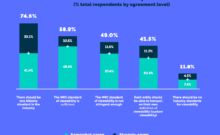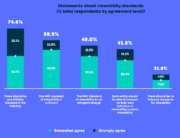Yesterday the House of Lords published a report into the UK’s digital advertising market. It includes: a call for a CMA study into whether the market is working fairly for businesses and consumers; proposals for enhancing workforce skills and attracting international talent; and, for those who have been involved the debate about digital ads, it covers some familiar themes:
- Measuring ad effectiveness. While acknowledging the undoubted benefits of digital advertising, the report cites calls from advertisers to improve the standards for what counts as an ad view for the purposes of charging the advertiser (the IAB defines video advertising as having been viewed if 50% of the ad is in view for two consecutive seconds).
- Ad misplacement. Linked to return on investment, another key concern of the report (which has gained a lot of commercial attention) is the display of ads alongside inappropriate content and the potential brand damage that can be caused.
- Ad fraud. The report refers to the difficulty of estimating how much ad fraud (eg views of ads by bots rather than real eyeballs) really goes on, but the core worry is the erosion of trust in the ad market. This is now an acknowledged problem that the industry is taking steps to rectify through third party tracking.
- Transparency of the digital ad market. The report focuses on the complexity of programmatic ads, and in particular the number of intermediaries involved in a buy. Rather than picking up the theme of rebates (which is a topic across the wider ad market – highlighted by the infamous 2016 K2/Association of National Advertisers report into media transparency), the report is more generally concerned about value leakage along the digital supply chain, citing evidence from the Guardian that in the worst cases a publisher will receive 30 pence in a pound spent by the advertiser. It concludes that this lack of transparency is the cause of the ad fraud and misplacement issues.
Read More at The Original Article: www.jdsupra.com









